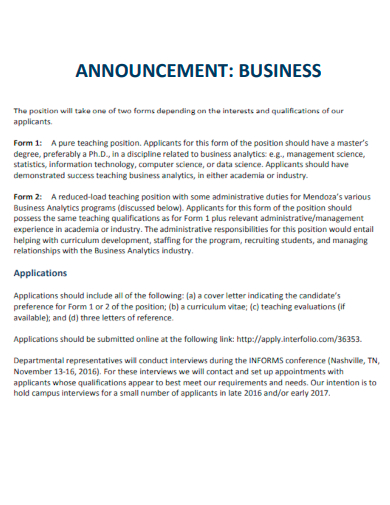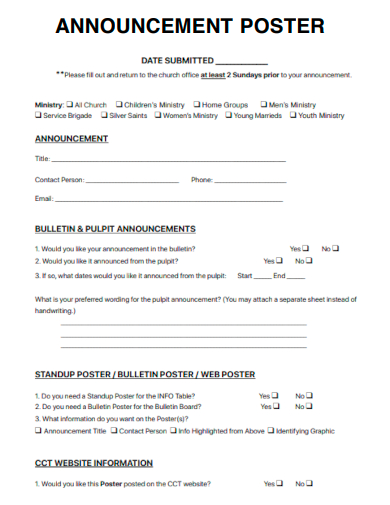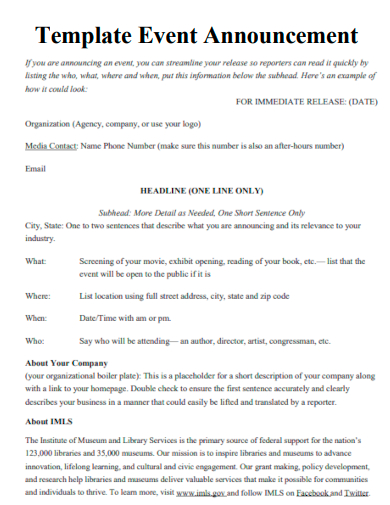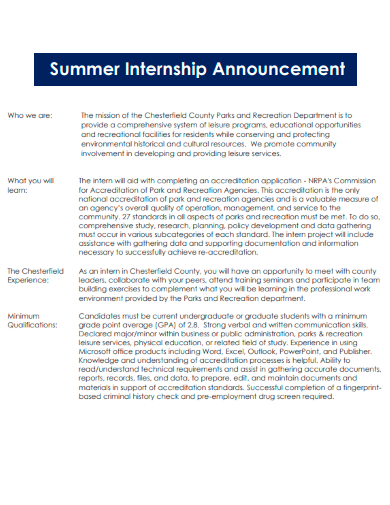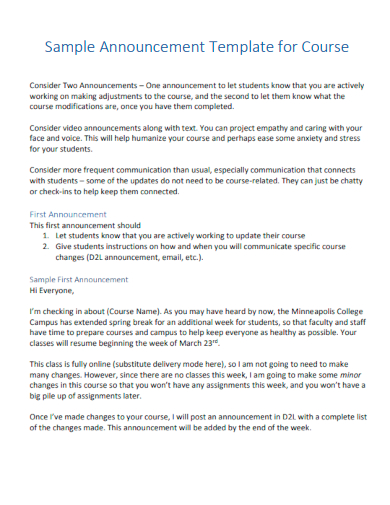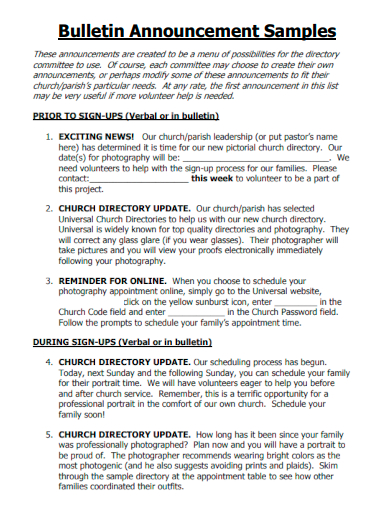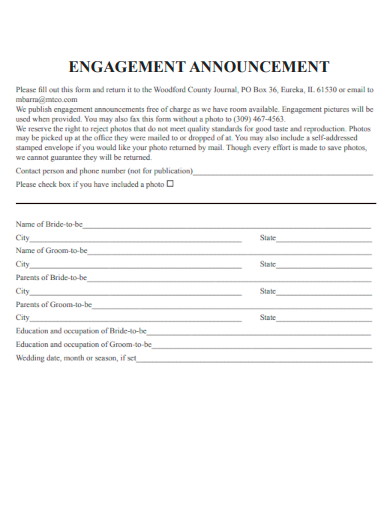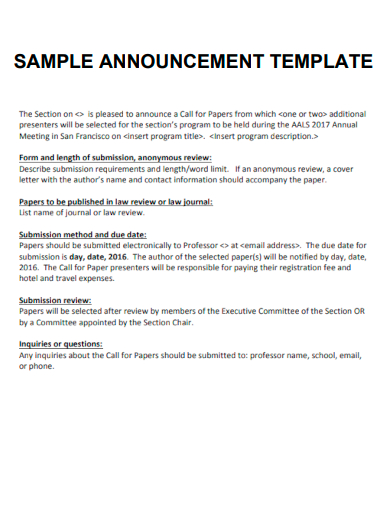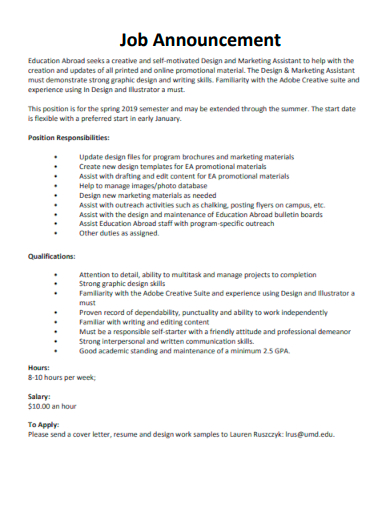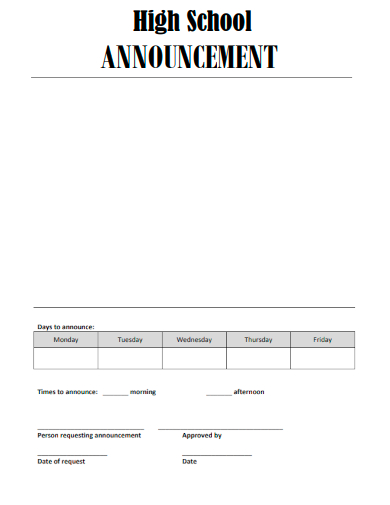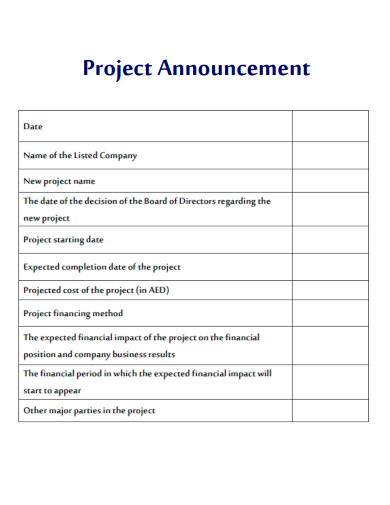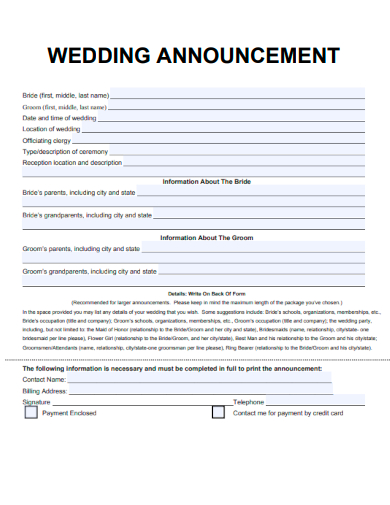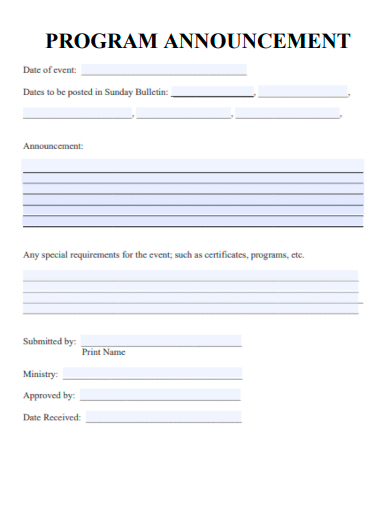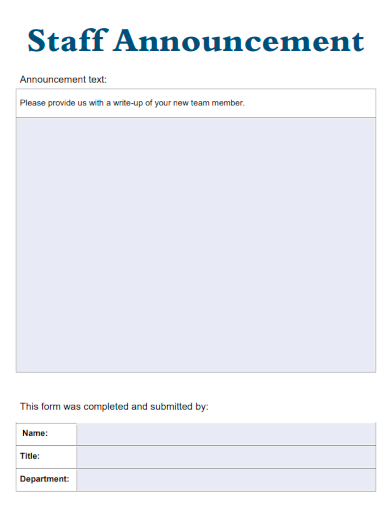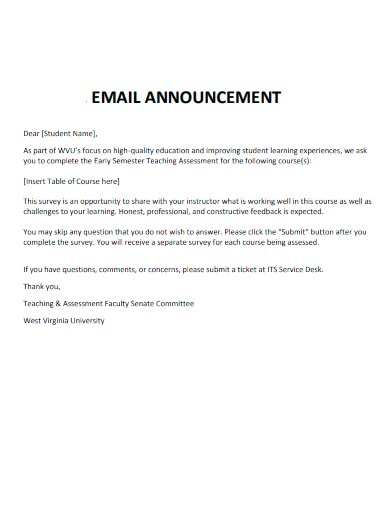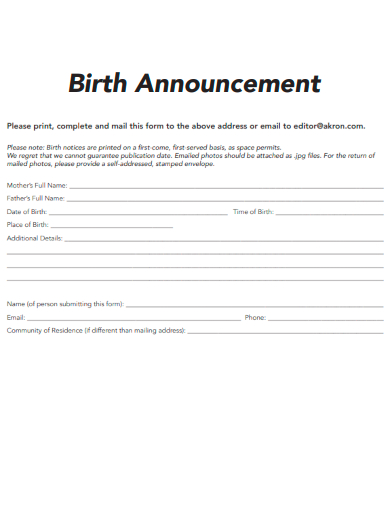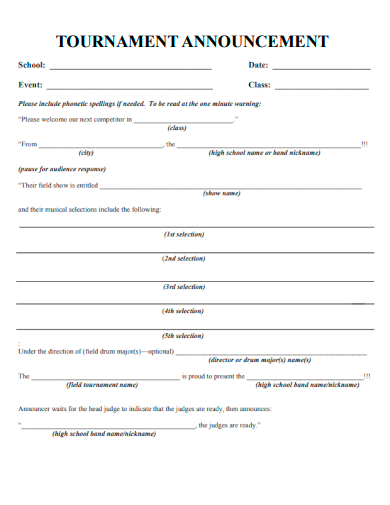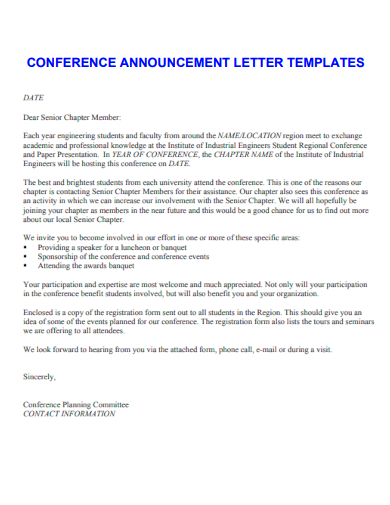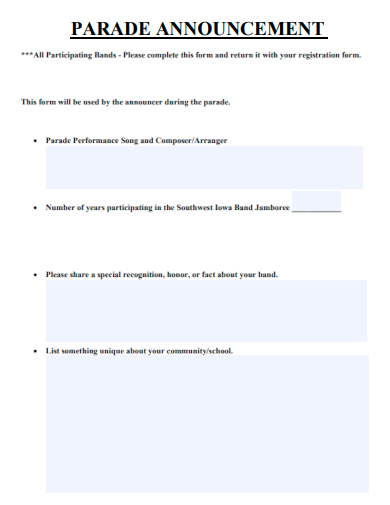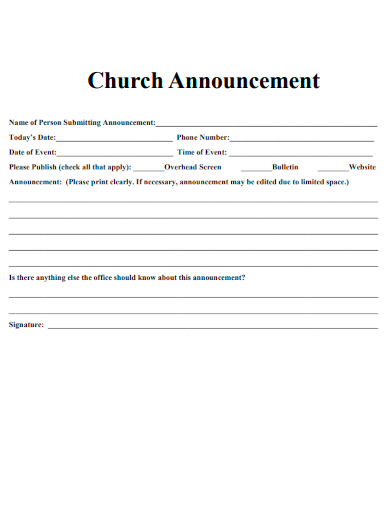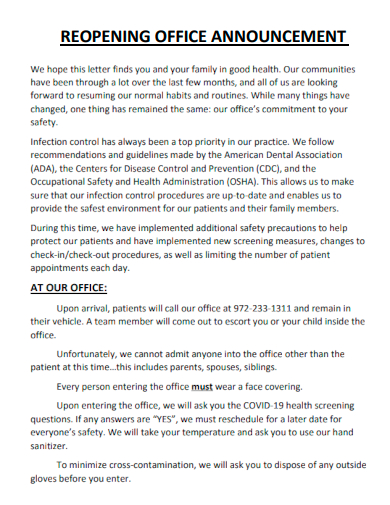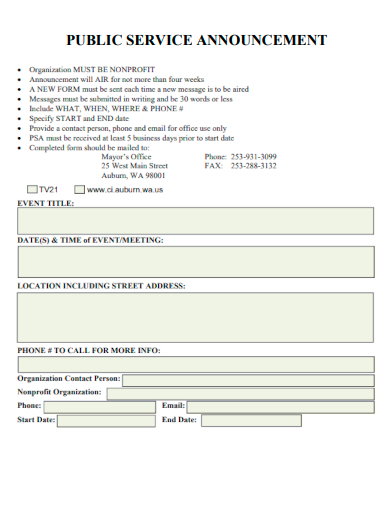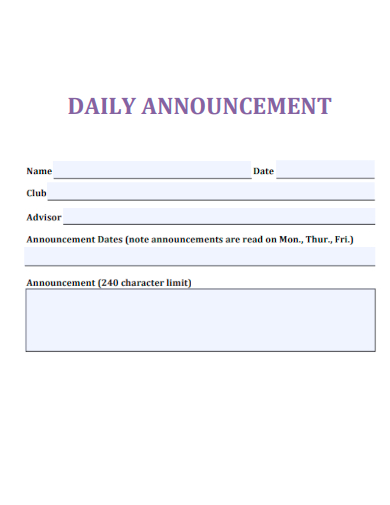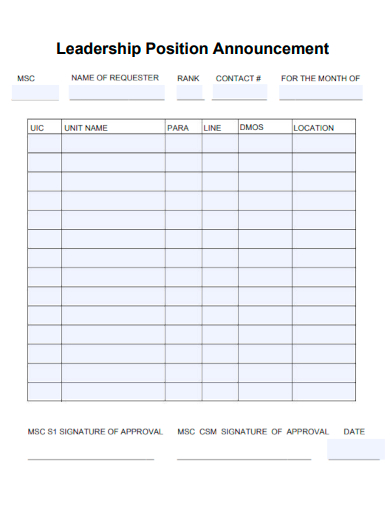In the bustling digital arena, standing out is more important than ever. With our Sample Announcement Template, creating impactful poster announcements becomes a breeze. This comprehensive guide, rich in best practices and insights, ensures your posters shine amidst the clutter. Whether for business events, community updates, or personal milestones, leverage this tool and other professionally designed announcement templates to craft announcements that resonate deeply and linger long. Dive in and redefine your announcement strategy.
FREE 31+ Announcement Samples
1. Sample Announcement Flyer Template
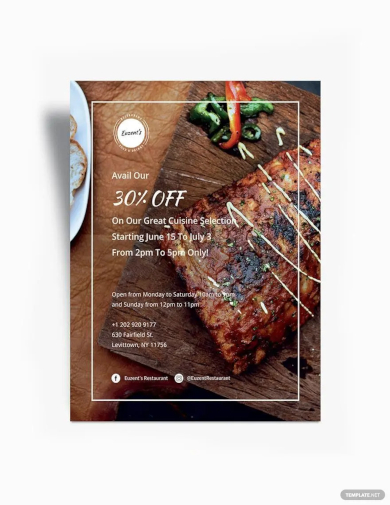
2. Sample Education Announcement Template

3. Sample Shipping Announcement Template
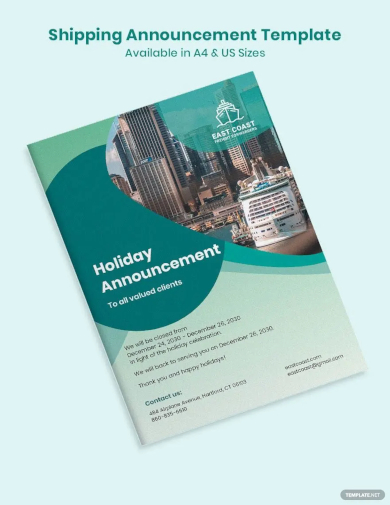
4. Sample Online Store Announcement Template

5. Sample Bar & Lounge Announcement Template

6. Sample Announcement Business Template
7. Sample Announcement Poster Template
8. Sample Event Announcement Template
9. Sample Summer Internship Announcement Template
10. Sample Course Announcement Template
What is a formal announcement?
A formal announcement is a structured communication method employed by individuals, organizations, or entities to convey important information, updates, or decisions to a specific audience or the general public. It is characterized by its clear, concise, and official tone, and it adheres to certain standards and protocols that differentiate it from casual or informal announcements.
Characteristics of a Formal Announcement:
- Clear and Concise: Formal announcements are designed to convey information efficiently. They avoid flowery language, jargon, or ambiguity, ensuring the message is understood by its intended audience.
- Neutral Tone: Unlike informal announcements which might use colloquialisms or express personal emotions, formal announcements maintain a neutral, objective tone.
- Specific Format: They often follow a specific structure or format, particularly if they’re from institutions like governments, corporations, or educational entities. For instance, a company’s financial announcement might follow a format that includes an introduction, the main content, and a conclusion or call to action.
- Relevant Details: All pertinent details related to the announcement are included. For a formal event announcement, this might mean the date, time, venue, and purpose of the event.
- Authenticity and Authority: They come from an authentic and authoritative source. Formal announcements might bear official logos, letterheads, or signatures to emphasize their legitimacy.
Importance of Formal Announcements:
- Reliability: Because they’re authoritative and authentic, formal announcements are perceived as reliable. Stakeholders, be they employees, citizens, students, or other audience segments, can trust the information presented.
- Record Keeping: They serve as an official record. For instance, corporate announcements about quarterly results not only inform shareholders but also serve as a documented history of company performance.
- Regulatory Compliance: In some sectors, especially financial and public sectors, formal announcements are not just routine but are regulatory requirements. They ensure transparency and keep the public informed of significant decisions or changes.
- Standardization: By adhering to specific formats and standards, formal announcements ensure that all recipients receive the same information in the same manner. This standardization eliminates confusion or potential misinterpretation.
Examples of Formal Announcements:
- Corporate Announcements: These include quarterly financial results, mergers and acquisitions, leadership changes, and more.
- Government Notices: Regulations, policy changes, public health advisories, or any significant governmental decision are often communicated through formal announcements.
- Academic Announcements: Universities or educational institutions might use formal announcements for changes in syllabus, exam dates, admissions, or other significant events.
- Legal Notifications: Courts or legal entities may announce verdicts, legal procedures, or regulatory changes formally.
In conclusion, a formal announcement is an indispensable tool for clear and authoritative communication in professional and official settings. It ensures that important information is presented uniformly, transparently, and can be trusted by its recipients. As we move further into the digital age, the medium of these announcements might change—from paper to digital formats—but their essence, which hinges on clarity, authenticity, and authority, remains constant.
11. Sample Bulletin Announcement Template
12. Sample Engagement Announcement Template
13. Sample Announcement Blank Template
14. Sample Job Announcement Template
15. Sample High School Announcement Template
16. Sample Project Announcement Template
17. Sample Graduation Announcement Template
18. Sample Wedding Announcement Template
19. Sample Program Announcement Template
20. Sample Staff Announcement Template
21. Sample Email Announcement Template
22. Sample Birth Announcement Template
What are the different types of announcements?
Announcements are essential tools for communication, allowing entities and individuals to disseminate information efficiently. Depending on the context, purpose, and intended audience, announcements come in various forms and serve diverse functions.
Business Announcements are a common fixture in the corporate world. Companies, both large and small, use them to communicate significant changes or developments. For example, when a company launches a new product or introduces a new service, it generally comes accompanied by an announcement to generate buzz. Similarly, businesses disclose their financial performances, mergers, acquisitions, or even top-level managerial changes through official announcements.
Within the Academic Sphere, announcements play a pivotal role in keeping students, faculty, and stakeholders informed. Institutions often release timely announcements regarding admission cycles, examination schedules, curriculum changes, or any forthcoming academic events, workshops, and conferences. These announcements ensure the smooth functioning of educational processes and keep everyone on the same page.
Governmental and Legal Announcements are paramount in democratic societies. Governments use announcements to communicate policy changes, new initiatives, public health advisories, and other essential information to their citizens. On the legal front, court verdicts, regulatory changes, or new laws often come with formal announcements to ensure clarity and transparency.
Personal Announcements carry a more intimate tone. Families announce births, celebrating the arrival of a new member. Engagements and weddings, too, are often proclaimed to friends and family, sharing joyous occasions. Conversely, obituaries serve to formally inform the community about the passing of an individual.
The Real Estate and Construction Sector frequently release announcements about new property listings, project launches, or infrastructural developments. These announcements keep potential buyers, renters, and investors informed about opportunities or developments in the area.
The world of Entertainment and Events thrives on announcements. Be it the release of a new film, the date of a music concert, details about an art exhibition, or information about a sports event, announcements ensure that fans and audiences are well-informed and can participate or engage accordingly.
Emergency Announcements are critical and often come with a sense of urgency. Natural disasters, public safety threats, or unexpected events often necessitate immediate and clear communication to guide the public on safety measures, evacuation protocols, or relief efforts.
Promotional Announcements form the backbone of the marketing world. Brands and businesses use these to introduce sales, discounts, special offers, contests, or any other promotional activity. Such announcements aim to attract and engage consumers, driving sales and brand interactions.
In the realm of Technology, announcements about software updates, platform changes, or the release of new digital products are frequent. Tech companies use these to keep their user base informed and excited about new features or improvements.
In sum, announcements, in their various forms, act as bridges of information, ensuring that specific messages reach their intended audience effectively. As our world grows more interconnected and dynamic, the role of announcements in keeping us informed and engaged remains as vital as ever.
23. Sample Tournament Announcement Template
24. Sample Conference Announcement Letter Template
25. Sample Social Media Announcements Template
26. Sample Parade Announcement Template
27. Sample Church Announcement Template
28. Sample Reopening Office Announcement Template
29. Sample Public Service Announcement Template
30. Sample Daily Announcement Template
31. Sample Leadership Position Announcement Template
32. Sample Promotion Announcement Template
How to Create a General Announcement Template?
Creating a general announcement template is an efficient way to ensure consistent, clear, and professional communication, regardless of the message’s specifics. By following a set structure and including essential elements, you can design a template that meets various needs, from business and academic notifications to personal milestones. Here’s a step-by-step guide to creating a versatile announcement template:
1. Define the Purpose:
Start by identifying the primary objective of your announcement. Is it to inform, celebrate, promote, or warn? Your intention will shape the tone and content of your message. For instance, a product launch would have a different tone from a safety alert.
2. Choose a Suitable Format:
Depending on where you’ll publish or send your announcement (email, website, social media, print), choose an appropriate format. For example, a printed announcement might require a header or logo at the top, while an email might start with a greeting.
3. Craft a Catchy Headline:
Your headline should grab the reader’s attention immediately. It should be brief, clear, and convey the essence of your message. For instance, Introducing Our Newest Product or Important Safety Update.
4. Begin with the Essentials:
Open with the most critical information. Answer the what, where, when, and why in the first few lines to ensure the reader understands the core message even if they skim through the rest.
5. Provide Detailed Information:
After presenting the key points, delve deeper. Include any relevant background, context, or specifics. If it’s an event announcement, for instance, give details about the venue, timings, ticketing information, and any special instructions.
6. Use Clear and Concise Language:
Ensure your language is straightforward, avoiding jargon unless absolutely necessary. The aim is to be understood by the widest possible audience. Keep sentences short and paragraphs well-spaced.
7. Include Relevant Visuals:
If appropriate and depending on the medium, add images, infographics, or graphics. Visuals can make your announcement more engaging and can often convey information faster than text.
8. Add a Call to Action (CTA):
Direct your readers on what to do next. Whether it’s Visit our website for more information, RSVP by this date, or Follow safety protocols, a clear CTA is crucial.
9. Provide Contact Information:
Always give readers a way to reach out if they have questions or need further details. This could be a phone number, email address, or a link to a contact page.
10. Review and Edit:
Before finalizing your template, proofread for any errors, inconsistencies, or unclear statements. If possible, ask a colleague or friend to review it too, as fresh eyes can often spot overlooked mistakes.
11. Add Personalization Fields (for digital announcements):
If you’re sending out announcements via email, consider adding fields for personalization, such as [First Name], to make the message more personal and engaging.
12. Create a Signature or Closing:
End your announcement with a closing note, thanking readers for their time or expressing hope for their participation or understanding. If appropriate, sign off with a name or department for a more personal touch.
By taking the time to craft a comprehensive general announcement template, you not only ensure the quality and consistency of your communications but also streamline the process for future announcements. As needs and platforms evolve, periodically revisit and tweak your template to maintain its relevance and effectiveness.
Related Posts
-
FREE 10+ Promotion Announcement Samples in PDF | MS Word
-
FREE 14+ Sample Wedding Announcement Templates in PDF | MS Word
-
FREE 8+ Sample Graduation Announcement Templates in PDF | MS Word
-
FREE 7+ Sample Birth Announcement Templates in PDF
-
8+ Price Tag Samples in Illustrator | PSD | Publisher | Apple Pages
-
How to Write a Best User Story: with Samples & Templates
-
FREE 20+ Correlation Coefficient Samples in PDF
-
FREE 20+ Personal Protective Equipment Samples in PDF
-
FREE 20+ Introduce Yourself Samples in MS Word | PDF
-
FREE 23+ Token Board Samples in PDF | MS Word
-
FREE 31+ Order Samples in Google Docs | MS Word | PDF
-
FREE 33+ Prescription Samples in Google Docs | MS Word | PDF
-
FREE 20+ Employee Appraisal Samples in MS Word | Google Docs | Pages | PDF
-
FREE 21+ Community Questionnaire Samples in PDF | MS Word
-
FREE 28+ Food Questionnaire Samples in PDF | MS Word

